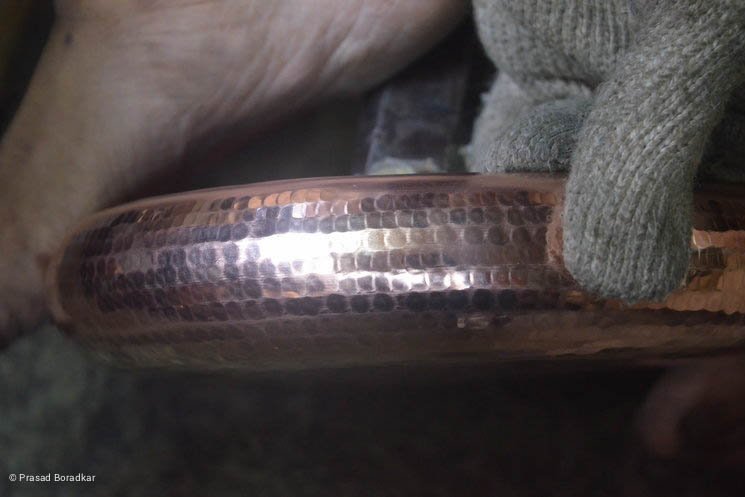Research
As a designer and an anthropologist, I am interested in the study of all things, physical and digital, big and small, mundane and extraordinary, simple and complex, which populate our world. This, of course, is also the study of culture. All things are essential components of the culture of everyday life. The cities in which we live, the buildings we occupy, the spaces we move through, the things we use, and the images we gaze upon mediate our experience of the world. It is in the constant company of these things that we go about our daily rituals of work and play. These things shape our world. And a good number of them are products of our own making; they are of human design. One of design's core missions is to fashion things so that we may have meaningful interactions with the world. And one of anthropology’s core missions is to study things so that we may understand culture.
I like to think of design as a mediating force... one that shapes technology in the service of human culture. Undoubtedly, in this process it ends up shaping culture itself.
User Experience Research
My approach to UX research is informed by three key experiences I have had over the years in industry and in academia:
Deep ethnography practiced over several years while studying a copper crafts and design community in India during my doctoral work at University College London
Rapid iterative testing and evaluation done at Google with device and app prototypes
Teaching qualitative research methods to undergraduate and graduate students at Arizona State University
I have planned and conducted a variety of UX research studies in these situations, including foundational research, concept testing, human factors evaluation, and directional studies to identify critical user needs, help generate product ideas, and validate new concepts. I have guided teams to use research methods such as:
Participant observations
Interviews
Material culture analysis
Co-creation (participatory research)
Usability studies
A/B testing, and more
On these projects, I have provided oversight on the end to end research planning and implementation (identifying research needs, authoring research documents such as research questions, protocols, consent forms, etc., securing legal, privacy, and security clearances, recruiting participants, launching and conducting studies, managing incentives, analyzing the results, generating insights and recommendations, and sharing findings with the team).
I am comfortable leading research and guiding teams through a range of UX research processes and methods to deliver critical insights for design and engineering teams.
Research Process
Ethnographic Research in a Craft Community
I have been conducting research with a copper craft community in India with the goal to understand their artistic, design, social, economic, and religious practices. For this study (that was the focus of my PhD in sociocultural anthropology), I used a range of qualitative methods that included participant observations, interviews, chaîne opératoire, learning the craft myself, and more.
Research Methods
Tambat Ali (Coppersmith alley)
This research was an examination of the materiality of copper in the context of a design and craft community in a place called tambat ali (coppersmith alley) located in the heart of the city of Pune in Western India. For centuries, several generations of coppersmiths (tambats) have been shaping this malleable, sensorial material into a variety of objects for domestic use. Copper (tamba), in an expression of transformational materiality, has in turn, shaped the tambats into who they are as persons. In addition, the materiality of copper has engendered a unique set of skills and techniques, and it has moulded their bodies and gestures. The tambats make a variety of objects that are described as vastu in the local language Marathi, a word that also refers to narratives that arc over the life of the material, the people, and the things themselves. For the past few years, the tambats have been collaborating with architects and industrial designers to create a variety of new copper products that are sold nationally and internationally. While industrial design practice typically tends to focus on form, user needs, or the market, in tambat ali, it starts with an emphasis on the properties of the material. Here, design unfolds in a new social context created by the presence of copper.
This research, with its focus on materiality, design, and craft, will attempt to show how copper has produced a materially inspired sociability, which has shaped the stories of objects, the nature of place, the practices of design and craft, and the lives of the people of tambat ali.
User Testing for “A Space for Being”, Google in Milan
Milan Design Week Salone del Mobile 2019
In 2019, Google’s entry at the Milan Design Week Salone del Mobile, was an exhibition called A Space for Being. The premise of this exhibition was to demonstrate the impact of design on one’s biology. Visitors to the exhibition walked through three different spaces over 15 minutes, and each space was designed to have a distinct look, feel, scent, mood, and sound. Each space had unique textures, colors and furniture. As visitors walked through these spaces, they wore a specially-made wristband that measured heart activity, breathing rate, skin temperature, skin conductivity and motion. When they exited the last space, each visitor was given a print out which artistically represented their response to each space and suggested which space made them feel most “at ease.”
My role on this project was to lead and direct all the user research that was done prior to the event to prove the hypothesis. In addition, at the gallery in Milan, I onboarded many of the visitors, explained the sensors on the wristband, and gave them an overview of the experience.
The video below offers a brief overview of the Space of Being experience.
A Space for Being Exhibition









